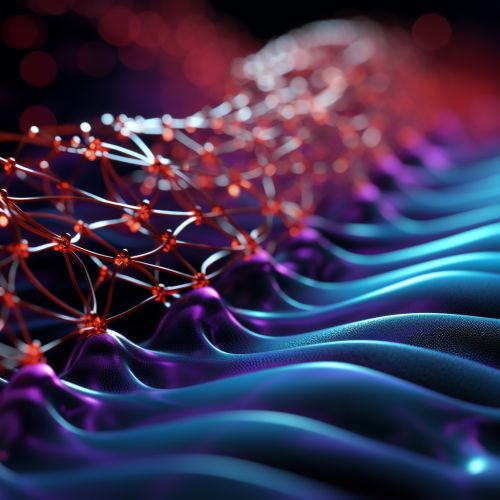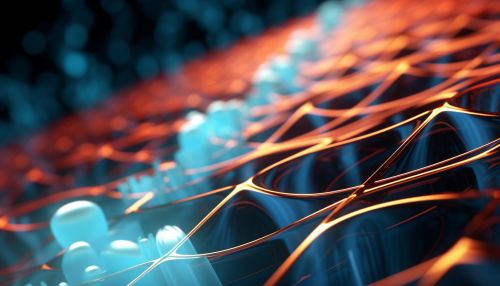Electrochemical gradient
Introduction
An electrochemical gradient is a gradient of electrochemical potential, usually for an ion that can move across a membrane. The gradient consists of two parts, the chemical gradient, or difference in solute concentration across a membrane, and the electrical gradient, or difference in charge across a membrane. When there are simultaneously both electrical and chemical gradients for a specific ion, the combination of both forces is termed an electrochemical gradient.
Chemical Gradient
The chemical gradient refers to the difference in solute concentration across a membrane. In the context of an electrochemical gradient, it is the difference in the concentration of a specific ion on the two sides of a membrane. This difference in concentration can create a force that drives the movement of ions from an area of high concentration to an area of low concentration, a process known as diffusion.
Electrical Gradient
The electrical gradient refers to the difference in charge across a membrane. In biological systems, this is often established by the movement of positively charged ions, such as sodium (Na+) and potassium (K+), across the membrane. This movement of ions creates a voltage difference across the membrane, also known as the membrane potential. The electrical gradient can drive the movement of ions from an area of like charge to an area of unlike charge.
Electrochemical Gradient
The electrochemical gradient is the combination of these two forces. For a specific ion, if the chemical gradient is driving it in one direction and the electrical gradient is driving it in the opposite direction, the overall movement of the ion will be determined by the relative strengths of the two gradients. This is known as the ion's electrochemical potential.


Role in Cellular Processes
Electrochemical gradients play a crucial role in many cellular processes, including the generation of ATP in mitochondria, the re-uptake of neurotransmitters in the nervous system, and the movement of nutrients and waste products across cell membranes.
ATP Synthesis
In mitochondria, the electrochemical gradient is used to generate ATP, the cell's main source of energy. This process, known as oxidative phosphorylation, involves the movement of protons (H+) across the mitochondrial membrane from an area of high concentration to an area of low concentration. This movement of protons is driven by both a chemical gradient and an electrical gradient, creating an electrochemical gradient.
Neurotransmitter Re-uptake
In the nervous system, electrochemical gradients are used to re-uptake neurotransmitters into neurons after they have been released into the synaptic cleft. This process is essential for the termination of signal transmission between neurons. The re-uptake of neurotransmitters is driven by the electrochemical gradient of ions such as sodium (Na+) and potassium (K+).
Nutrient and Waste Transport
Electrochemical gradients also play a role in the transport of nutrients and waste products across cell membranes. This process, known as active transport, involves the movement of substances against their concentration gradient, from an area of low concentration to an area of high concentration. This movement is driven by the energy stored in the electrochemical gradient.
Conclusion
In conclusion, electrochemical gradients are a fundamental aspect of cellular physiology, playing a crucial role in a wide range of cellular processes. By combining the forces of chemical and electrical gradients, cells are able to control the movement of ions across their membranes, enabling them to carry out essential functions such as energy production, signal transmission, and nutrient transport.
